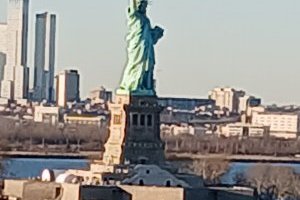
As far as national icons go, Frédéric Bartholdi’s Liberty Enlightening the World is the ultimate. It is a symbol of what this nation is supposed to stand for, for the nation in general and for New York City in particular, Uncle Sam is as fictional as Santa Claus, Mom is mad at you half the time, apple pie is overrated, and the flag is everywhere, but Lady Liberty is different. The UN has declared her a World Heritage Site.
She’s in one place, and as the genuine article, just has to be experienced in person. However…
There are a number of things that have to be seen properly at a distance, and this is one of them. For one thing, it costs $12/person MINIMUM to get o Liberty Island. For that you get to see the statue’s butt from a distance. They started letting people in for the climb to the top a few months back, but in order to do that, you have to make reservations well in advance (go here), or get to the ticket office in Castle Clinton (itself a National Monument), by at least eight in the morning. Just going on a whim is a waste of time. Generally, the ferries goes there and Ellis Island, and starting around noon, there’s not enough time to see both it and Ellis Island (which IS worth going to), and so if you’re in the Battery in the afternoon, or New Jersey’s Liberty State Park, where the …
Keep reading 0 comments
On our way from Shiraz to Istfahan, we stopped at the tomb of Cyrus in Parsagad. there were some bas reliefs of a guy in a fish suit and a few other minor things, the city Cyrus built there was mostly made of wood, and that all rotted away ages ago. But the tomb itself was made of stone, and because the locals claimed that it was the tomb of Solomon's mother, it had survived the vandals. I noticed that someone had left a bouquet of flowers on the stairs leading up to the entrance in tribute.
I was touched.
Keep reading 0 comments
Let's just call it the third pole. Timbuktu was one of those places of legend that it was impossible to get to. That is until the turn of the 19th century, when French and British explorers finally set foot in the place.
Then there was the great disappointment the golden city in the middle of nowhere turned out to be made of adobe and dust. It wasn't even a city, just a largish town with the great river Niger on the one side and the great Sahara desert on the other. The caravans from the salt mines brought the valuable edible rocks to the boats waiting on the river in exchange for other goods.
The glorious city of treasure was a myth, or so it seemed to the west.
The true treasures of Timbuktu are the ancient manuscripts that the locals have preserved since the demise of the great University centuries before, and there is, of course, the river, without which, the town could not exist, and yes, the salt which is brought in trucks and not on camels, and the river irrigates vast rice paddies, which from the air looks extremely strange, a green finger reaching into the desert.
The rice feeds the local population, and the price of salt isn't what it used to be and the Toregs, the tribe indigenous to the area has lost most of their camel's drought and disease, not to mention a rebellion against what was then a dictatorial government a few decades …
Keep reading 0 comments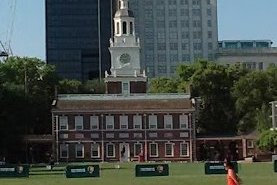
In the spring of 1799, the city of Philadelphia, PA was bureaucrat heaven. The State, Local and Federal governments were for the most part sharing the same space, and the their constituent parts were lodged in every nook and cranny of downtown Philly. Politicians from every conceivable level were walking the streets and 18th century lobbyists were waiting behind every corner waiting to pounce.
But then, almost suddenly, the city was abandoned. First the Pennsylvania government decided they needed more space and they moved to Lancaster in the middle of the summer.
Then, in 1800, the Feds moved to Washington, and Philadelphia was left with only its local pols, and a pressing need with some other industry to fuel its economy.
That the city did, but the few blocks around Chestnut street continued to hold the remains of what was at one time the center of the American universe.
It was here at the old State House, on the first floor, that the Second Continental Congress, decided to declare themselves a thing called the United States of America in 1776. Then ten years later, the same Congress, now located in New York, endorsed the creation of a heretofore-illegal convention to replace the ramshackle constitution that had been in effect since 1781, and suggested holding it in the empty lower floor of the Pennsylvania State House.
But in 1801 no one really cared all that much about historic preservation, and the place became a warehouse, then …
Keep reading 0 comments
Once upon a time there was a land called Yugoslavia. It was full of enchanted forests and beautiful scenery and was ruled by an enlightend despot named Joseph Broz Tito. It was nominally Communist, but they didn’t really care all that much about ideology, except, perhaps for keeping Tito in power for as long as he kept breathing. He kept the peace and the Soviets out, and sometime around 1950, his regime decided that tourism was something that should be encouraged for it’s own sake, and right there on the coast was a little walled town surrounded by beautiful hills and an azure sea. The place was Dubrovnick, and is as cute a resort town as you’ll find in these parts, and developed a reputation as the coolest place in the Eastern bloc.
Tito died in 1980, and Yugoslavia was kept together by fear of Soviet invasion. Then in 1989, the Soviets let it out that they weren’t going to do that sort of thing anymore and all of a sudden the Eastern bloc had fallen apart, and so had Yugoslavia. The central government tried to keep the country together by force, there’s a big sign on the walls of Dubrovnik showing exactly where Yugoslav bombs hit. (It wasn’t just Serbia then). The whole thing would get a whole lot uglier to the north in Bosnia, but the Serbs pretty much gave up on Croatia in general and Dubrovnik in particular, leaving a bizarre-but-delightful mixture of medieval Europe and the …
Keep reading 0 comments
The pre-Islamic heritage of the middle east and central Asia hasn't always been as appreciated by Moslems as it is now, note the notorious destruction of the Giant Buddha's in Bamiya, Afghanistan back in March of 2001, or the sale of the Elgin marbles, and all that ancient Egyptian art in various museums around the world. It was something like that which almost happened in Persepolis back during the dark days of the hostage crisis when the limits of revolution were reached. As to the details of the incident below, I cannot vouch for the details, and I never found out the names of the people involved, all I know is that a second tour guide acknowledged the event took place. (Any more information on the subject would be appreciated.)
According to Islamic lore, in the year 610 of the Christian Era, a certain Abu l-Qasim Muhammad ibn ‘Abd Allâh al-Hashimi al-Qurashi was ordered by the Archangel Jabril to read out loud from a book that didn't yet exist. Prior to that, the world was in the "age of ignorance" and what was produced didn't matter all that much.
For the next 1,189 years, most of what was built by the hands of man prior to that was either ignored or destroyed. True, the works of certain Greek and Jewish philosophers were preserved and studied. Euclid and Galen were very useful, after all, but what was left of the great library at Alexandria was burned to the ground (although some …
Keep reading 0 comments
This was written in 1989, when I was first starting out....
Mr.Mitu's Botanical Safaris
By Eric Lurio
Zanzibar. You start with a name. Everybody's heard of it somewhere. A mythical place that only exist in the Arabian nights or in the lyrics of Billy Joel. The name brings to mind many things; romance, intrigue, adventure. Many, many things, but fruit isn't one of them. But nowadays, fruit is what Zanzibar is all about
I first heard of Mr. Mitu's spice tours from a Scottish lady in Arusha, Tanzania. My friends and I had just finished a safari and she was trying to put together one, and we were comparing notes. She said that there were three musts when I got to Zanzibar—hang out at the beach, go to nearby Prison Island and see the giant tortoises, and take the spice tour. I was intrigued.
So the next morning. I bought a bus ticked for Dar-Es-salaam, the capitol of Tanzania, where it was said transportation there could be had.
One thing that must be said about Tanzania: it's dead broke. It's been that way since the war with Uganda in 1979, and consequently hasn't been able to start repaving the roads until very recently. this makes it very hard to sleep on the overnight bus, a situation aggravated by the driver's playing a tape of "Mammu on the Telephone" at full blast over and over again for most of the night.
Arriving at Dar, as it is called, one becomes aware …
Keep reading 0 comments
Jerusalem is too damn holy for it’s own good. I’m not saying everyone who lives there is nuts, that’s obviously not the case, but it just seems that way. But then, I mostly hung out with tourists. They’re definitely nuts.
When I was last there a short time ago, I stayed in a youth hostel near the Jaffa Gate, and the first person I met after the people at the reception desk was a guy who claimed to be Jesus Christ. I later learned that he wasn’t the first guest that month to have made that claim. But one has to expect that sort of thing.
It’s called “Jerusalem syndrome.” You think you’re God, or Jesus or Moses or angels are telling you to convert the Catholics to Christianity or something like that.
There are two Jerusalems: the first is the capitol of Israel. This isn’t a particularly interesting place. Some decent bars and restaurants, and aside from the big museums, there’s nothing really there, but then for the most part nobody goes to see this Jerusalem, there’s no reason to unless you’re a lobbyist or a film fan. Everybody comes to see the other one, that place where religion lives. Holyland-land.
Holyland-land, or more properly, the Old City is not really a city at all, but a tiny walled village about one kilometer square. Going all the way around the city walls will take no more than half an hour at most, and within one will find just souvenir …
Keep reading 0 comments
¡¡¡Silenc-YO!!!
The crowd at the Castle of the Three Kings of the Orient is larger than one would expect for a daily event, but the evening is lovely and there’s really no reason to avoid just hanging out with friends after a hard day’s work, or touring. The sun has just set and the show is starting…
¡¡¡Silenc-YO!!!
A soldier clad in 18th century uniform walks through the crowd wielding a torch, which he juggles like a bowling pin. This is the first part of an age-old ceremony, where the Spanish army would warn pirates that they weren’t welcome. Calling for silence in this solemn event, he’s soon joined by others similar dress. One carries a cannonball, the other gunpowder. They do their job and ker-POW!
That’s it. The ceremony’s over and the crowd begins to disperse, but one cannot help but think that what they were really aiming at was not ancient buccaneers, but Florida 90 miles to the northeast. This is Cuba, America’s nemesis, and forbidden fruit for tens of thousands of Yankee tourists every year. The government won’t let us go. What better reason to try?
It's possible to do it legally, and I did just as the Bush administration cracked down. Obama made it slightly legal again, but Romney might clamp down again....
Keep reading 0 comments
Konso is very special place for me! especially for its settings and natural gifts and talents of the residents. As one one of konso people I feel proud of being from land with such type of natural blessings and from a society with such type of talents. i.e tracing, wood curving(waka), conflict resolution techniques. this is just to say a little of what Konso is endowed with.
Keep reading 0 comments
We joined the Cosmos Central Europe tour in March-April 2012 and the Wieliczka Salt Mine was offered as an optional excursion, paying EUR 40 per person. We didn't regret joining the tour of the salt mine. We've been all over Europe and it was our first experience to be in a salt mine. The St. Kinga Chapel was very impressive with the chapel carved entirely of salt. One advise: you should be able to walk for a very long period of time and be able to go up and down long flight of stairs.
Keep reading 0 comments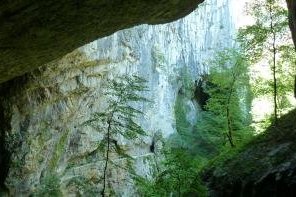
I was rather impressed with this magnificent cave complex and the wonderful surrounding countryside. Whilst I don’t have a huge amount of knowledge to judge the quality of these caves compared to other examples on the World Heritage list, I can certainly say they were a spectacular site.
The first part of the guided tour takes you through a complex with various impressive examples of stalagmites/tites and other forms of dripstone. The guide did a pretty good job of explaining how, why and for how long they have formed; we were then led into another rather massive chamber.
After that came Europe’s largest underground canyon. I wasn’t really expecting it to be so remarkable, from the moment we entered it you could hear the water thundering below. After plucking up the courage I peered down to see it bubbling and gushing deep below me. The recently added bridge is rather magnificent and gives a wonderful sense of scale as you stare down at the huge drop below.
One thing I hadn’t appreciated beforehand was how pretty the area outside the caves is. The exit from the underground section brings you to a very lovely gorge which looked at its very best in the bright early summer sunshine. The high temperature and mildly tight time frame meant I decided to ride the funicular railway back to the top; however on another day I think I would have enjoyed the 50 minute walk through the gorge, to see the rock arches and …
Keep reading 0 comments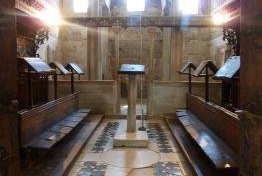
My first taste of this site, which is spread across Italy, was in the delightful town of Cividale del Friuli tucked up in the North East near the Slovene boarder. The town was a rather wonderful clump of cobbled streets, erratic squares and precipitous bridges cut through by the powder blue waters of the river Natisone.
This was the first capital of the Longobards in Italy so seemed like a great place to start with this site. The actual inscribed bits of the town are limited to the cathedral and the area surrounding it. I must admit to not finding the cathedral particularly remarkable, however the real highlight was behind in the Lombard Temple. The temple is in a pleasant ecclesiastical complex, and is pretty tiny, however the delicate, almost brittle looking woodwork and frescos were exceptionally rewarding. The wonderful view from the jasmine scented terrace at the exit was great.
After this I had a trip around the museum which had a fine selection of Roman (the town was founded by Julius Caesar), and Longobard exhibits, including the contents of graves from the nearby necropolis.
I doubt I could design a more pleasant place to while away a sunny Sunday morning, a slow cappuccino overlooking the Duomo was the perfect way to slow down after a wonderful night out in nearby Udine, which is a lovely place to bar hop on a Saturday night.
Hopefully in the future I will visit more of this serial inscription; if they are …
Keep reading 0 comments
We've visited Bagrati Cathedral yesterday. The restoration process is coming full force, transforming the building. During my last visit, the church had no roof. Now, the roof is done and building is almost reconstructed. I really enjoyed the "original" no roof look. Now, it looks just like any other church in the area.
Keep reading 0 comments
I visited in Bethlehem in January 2011 and of course the main site there is the Church of the Nativity. When I entered the church (through very small door) there was service still going and the priests (or monks) were singing and incense was smelling strongly. Because the priests were inside of the Grotto of the Nativity their singing was echoing mysteriously around the church. Very mystic atmosphere. After the priests left somewhere through a secret door I went to see the grotto myself. Smell of incense was very strong and I had hard time breathing. I watched some time how people kissed the spot where Jesus was born and then walked around the church complex. When big Russian tourist group arrived I decided to leave the church.
As this is the most holiest place in Christianity I think it deserved the World Heritage Site status. The Church of the Nativity itself isn't really spectacular looking and also inside it's quite simple but the history is the thing that matters here.
Keep reading 0 comments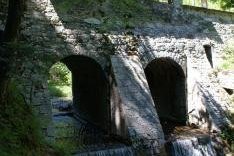
I visited Idrija, the Slovenian part of the WHS, in May 2012, expecting that it would be inscribed a few weeks later. Idrija is a small town with about 6000 inhabitants, 50 km from Ljubljana on the junction of the subalpine and the karst areas. The town lies in a picturesque valley surrounded by forest, quite unusual for a mining town. Mercury was mined for 500 years and until its closure Idrija was the second largest mercury mine, Almadén being the first. The WHS consists of seven parts: the old town, two other sites in the vicinity of the town centre, and four water barriers located in the surrounding mountains.
The historic mine, the Anthony's Shaft dating from 1500, is situated in the old town and is open to visitors. The guided tour takes 1.5 hours, it starts with a 20 minute multivision presentation. The oldest mine galleries are narrow and you have to bend down several times, the newer mine tunnels are wider and higher. The different steps of mercury mining and the techniques and tools that were used over the centuries are explained. And you can also see the underground chapel dating from the 18th Century. It was interesting to learn about the specifics of mercury mining. The mercury ore deposit is relatively small: 1500 m long, 600 m wide and 400 m deep, just below the town. In Idrija the metal was found both in its elemental liquid form and as cinnabar ore (mercury sulfide). However, the …
Keep reading 0 comments
As a direct descendant of those deported in 1775, I finally felt like pieces of my life had come together and I had a real connection to my past. When I arrived at Grand Pre, I felt like I had come home. It was also a very humbling experience to walk where my ancestors lived and eventually left from.The land where I grew up in Louisiana had always been important since this is the area my family settled after leaving "Acadie". Now I know why. The beauty of Grand Pre was indescribable. It is a place I want to return to again.
Keep reading 0 comments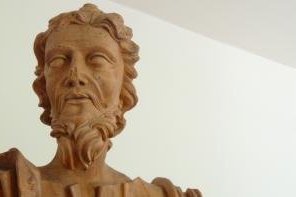
As the others have said below Porec is a pretty town that can seem somewhat lost under tourist paraphernalia; however the basilica and especially its mosaic decorated apse are really worth going to visit. The museum attached to the basilica and its bell tower also provides nice additions to the golden mosaics. I really liked sitting on the walls next to the sea inside the compound before ducking back in to have another view of the decorations.
Despite being a tourist hotspot, I found public transport connections to be a little limited; as such I was left with the option of either 8 hours or 1.5 hours in Porec. I gambled on the lesser being enough and I don't think I made the wrong decision. The rest of the town is a pleasant maze of cobbled streets and waterfront boulevards; however every space was given over to the trappings of the tourist industry which made the experience a little underwhelming.
This stretch of the Istrian coast was really pleasant and I had a wonderful time in Pula further to the south, and Rovinj also looked like a worthwhile destination.
The basilica complex is really worth a visit on this extremely pleasant stretch of coastline. Whilst the atmosphere of the town wasn't exactly to my taste, it is a pretty place and certainly deserving of exploration.
[Site 5: Experience 4]
Keep reading 0 comments
The Augustusburg was simply an amazing castle, with elaborate design and lavish furnishing. Even though much of the furniture were not the original, it was still a beautifully restored castle.
It is easy to get to Augustusburg because it is just a few hundred metres away from the Bruhl station. The combination ticket, along with the Falkenlust cost 7 euros. To visit the Augustusburg, a guided tour is compulsory for any entry. Guide only speaks German but there are audio guides in various languages. However, German listeners get to enjoy a deeper and more interesting tour.
Falkenlust is a good 2 miles away or almost an hour walk. The distance seems to be longer than it sounds, after passing through the gardens, forest walk and passing through some farmland. Care has to be taken because no clear signage is available and it is not clearly marked on the google map, except for the path Falkenluster Allee for some clues. Otherwise, ask some of the park strollers passing along. No direct transportation, except maybe taxis, is available, which is quite disappointing.
From here, another half day trip can be taken to visit the nearby Aachen Cathedral, by changing trains in Cologne. For the following day, half a day trip up north to Zollverin Coal Mine at Essen can be taken. Probably take Cologne as the base, and for two nights, including the Cologne Cathedral, 4 amazing and quite different world heritage sites can be visited. Do get the regional train pass …
Keep reading 0 comments
I'm currently living in Kunming, so was able to make this a relatively easily day trip (June 27, 2012). I took a cab to Kunming's Southern Bus Station (Nanbu qiche keyun zhan) and from there purchased a bus ticket to Chengjiang (17 kuai). I was the only Westerner on the small bus, though some teenagers on it knew some relatively advanced English and were thrilled to have an opportunity to speak it. Upon arrival at the Chengjiang bus station, three small tri-wheeled taxis argued over getting to take me to Maotianshan (Hat Sky Mountain), the central area of the Chenjiang Fossil Site. I was able to negotiate the initial quote of 100 kuai down to 75 kuai for the 22 kilometer trip with ease. My Chinese is only intermediate, but I think the taxi I took was the only one of the three who knew where Maotianshan was. This may change if Chengjiang receives World Heritage status next week.
The ride up to Maotianshan was beautiful, passing through two farmland areas and two parts of Chengjiang city. The taxi, which, like the others, was an open-doored box with two benches facing each other, had some difficulties getting up Maotianshan, and I had to shift benches to help balance my weight. My taxi driver was incredibly friendly and (unprompted) stopped at a streetside vendor to get me lunch. As we went up the mountain and into the protected area, I could see some phosphate mining and signs of old, now reforested …
Keep reading 0 comments